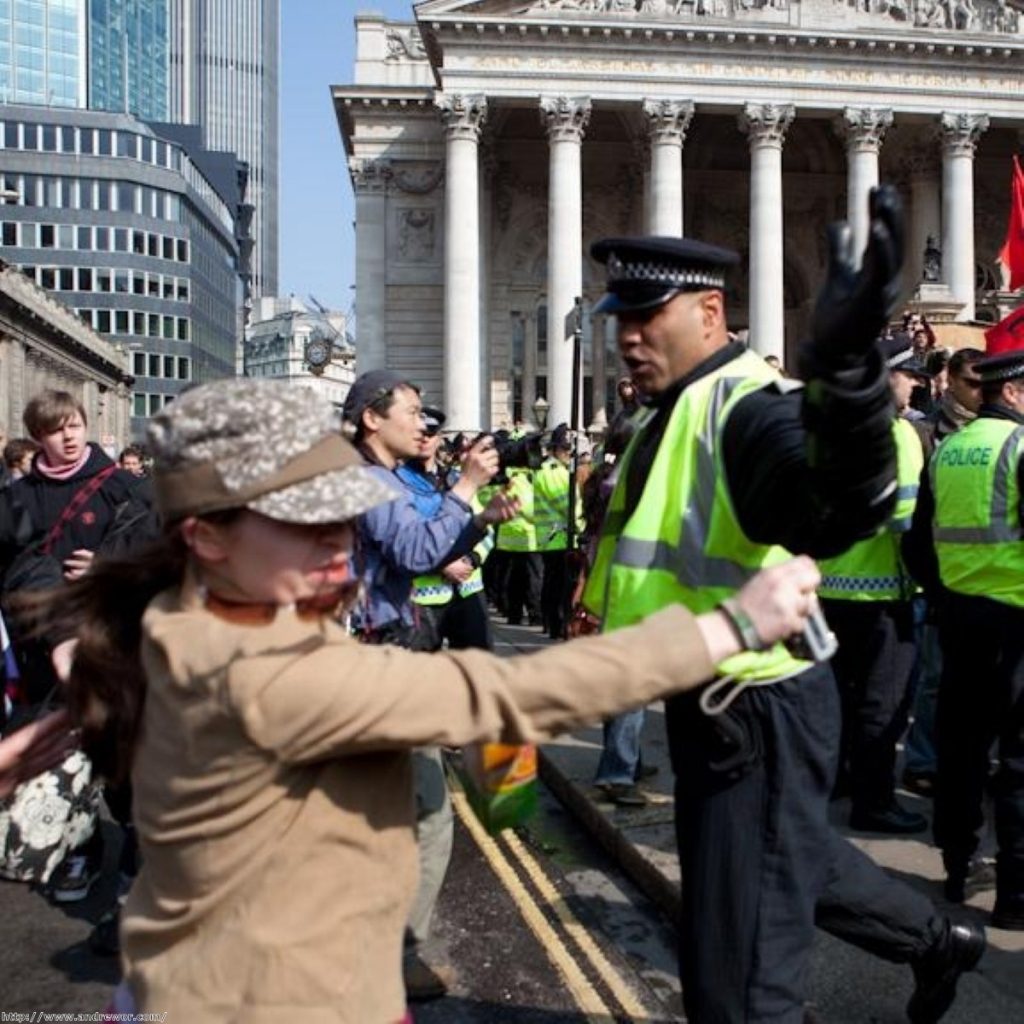G20 report calls for radical shake-up of protest strategies
By Ian Dunt
The official report into the policing of the G20 protests has called on the police to help facilitate protest, rather than treat it as public disorder events.
The review, conducted by Her Majesty’s Inspectorate of Constabulary (HMIC), found several faults in the way the policing of the demonstrations on April 1st was organised.
“The starting point for the police is the presumption in favour of facilitating peaceful assembly,” it read.


“However, the police may impose lawful restrictions on the exercise of the right provided such restrictions are lawful, have a legitimate aim (such as the interests of public safety or the protection of the rights and freedoms of others) and are necessary and proportionate.”
Concerns were also raised concerns about the use of ‘kettling’, where an area is cordoned off to those who wish to enter or leave it.
The Met was defensive today over parts of the report which suggested that bronze, silver and gold commanders on the ground did not have full understanding of the Austin case, where the House of Lords specified the conditions upon which a kettling tactic could be employed.
The report called for protectors to be made aware of any likely police action, a full ‘release plan’ for vulnerable or distressed people, or those inadvertently caught up in the demonstration, easy access to information, including the reason for the cordon, its duration, and exit routes, and clear signposting of amenaties.
James Welch, legal director at Liberty, said: “The tactic of ‘kettling’ large groups so that peaceful protesters and passers-by are trapped for hours alongside more troublesome elements exacerbates tensions and creates a risk to public safety.”
There is some criticism in the report about the way information was handled by police, particularly in regard to the death of Ian Tomlinson, a newspaper vendor who was caught up in the protest. Mr Tomlinson died moments after coming into contact with the police, who pushed him to the ground.
“Police have highlighted uncertainties and dilemmas around using potentially sensitive information connected with death or serious injuries” at protests, the report read. It called for new guidelines on similar situations.
A Met spokesman today said: “We’ve all seen individual acts that caused concern and these are being investigated”.
However, the section on information about Mr Tomlinson’s death is unlikely to satisfy his family or activists, who have serious concerns about the way in which Met press releases seemingly gave journalists exaggerated information – for instance about projectiles thrown at medical workers – immediately after the event.
Assistant commissioner Chris Allison, in charge of central operations, pointed out that the Met itself asked for the report.
“Whilst containment is the most effective tactic that we currently have to deal with violence and disorder in these types of situation, the MPS has always acknowledged that there are challenges associated with it,” he said.
“The recommendations in the report signpost ways in which we can improve our use of this tactic.
“The report states that our operation was highly effective in significant respects but we accept that some things can, and will be, done differently in the future.”
There will be a review of training and tactics in light of the report.
Liberal Democrat home affairs spokesman Chris Huhne said: “Aspects of the policing of the G20 protests clearly fell far short of what this country expects.
“This report documents not just failures of individual discipline, but inadequate police strategies and training for dealing with peaceful protest.”
There are currently six separate Independent Police Complaints Commission (IPCC) investigations into events surrounding the G20 protests.









